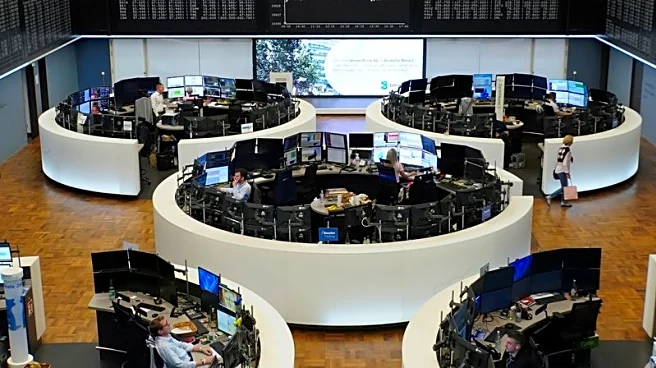What's Happening?
The food ingredients sector is witnessing a significant surge in mergers and acquisitions (M&A) activity in 2025, with 40 deals recorded so far, according to a report by Oghma Partners. The total value of these deals has already surpassed the figures from 2024, amounting to €3.87 billion. This year is expected to set a new record for the number of M&A transactions in the European food ingredients sector. The deals are primarily driven by the need for geographical diversification, innovative assets, and sustainable operations. Cross-border M&A accounts for more than 65% of the transactions, with Spain, France, and the UK being the most attractive geographies for these deals. The market is fragmented, with larger players worth at least €50 billion coexisting alongside smaller, specialized ingredients companies.
Why It's Important?
The surge in M&A activity within the food ingredients sector highlights the growing demand for innovative and sustainable food solutions. This trend is significant for the U.S. food industry as it reflects broader global shifts towards healthier and environmentally friendly food products. The focus on dual-functional ingredients, which offer both sensory qualities and practical functions, is particularly noteworthy. As climatic pressures and geopolitical instability affect the supply of certain ingredients, the industry is compelled to seek alternatives, which could lead to increased innovation and diversification. The growth in protein, botanicals, and cultures, expanding at rates exceeding 7% annually, indicates a shift towards more health-conscious and sustainable food options.
What's Next?
The continued growth in M&A activity suggests that the food ingredients sector will remain dynamic, with smaller innovators and start-ups gaining market share through differentiated offerings. Private equity is expected to play a significant role, accounting for more than two-fifths of the total deal output since 2020. As the Western European ingredients market grows at an annual rate of 1%, sectors like protein and botanicals are expected to outpace this growth significantly. The demand for alternatives to ingredients affected by climatic and geopolitical factors will likely drive further innovation and diversification in the industry.
Beyond the Headlines
The record M&A activity in the food ingredients sector may have deeper implications for global food security and sustainability. As companies seek alternatives to ingredients impacted by geopolitical instability, such as gum Arabic affected by the civil war in Sudan, there could be a shift towards more resilient supply chains. This could lead to increased investment in research and development to find sustainable substitutes, potentially influencing global food policies and practices. The emphasis on health, clean-label, and sensory experience trends may also drive cultural shifts towards more conscious consumption patterns.












